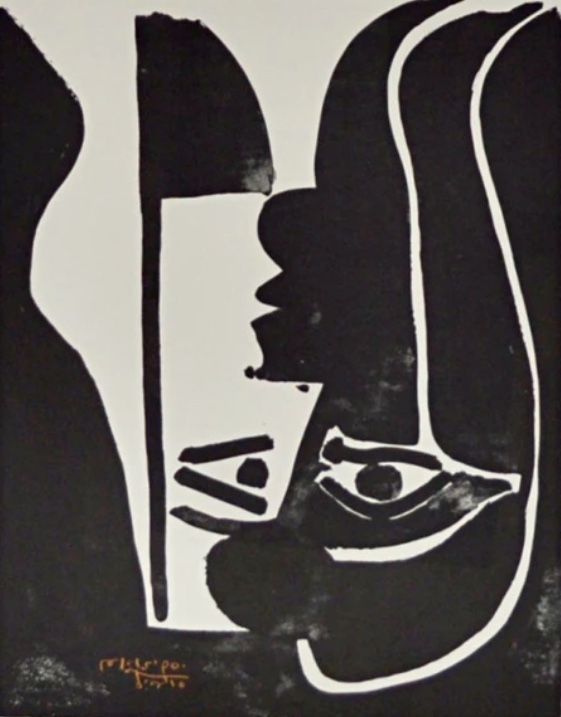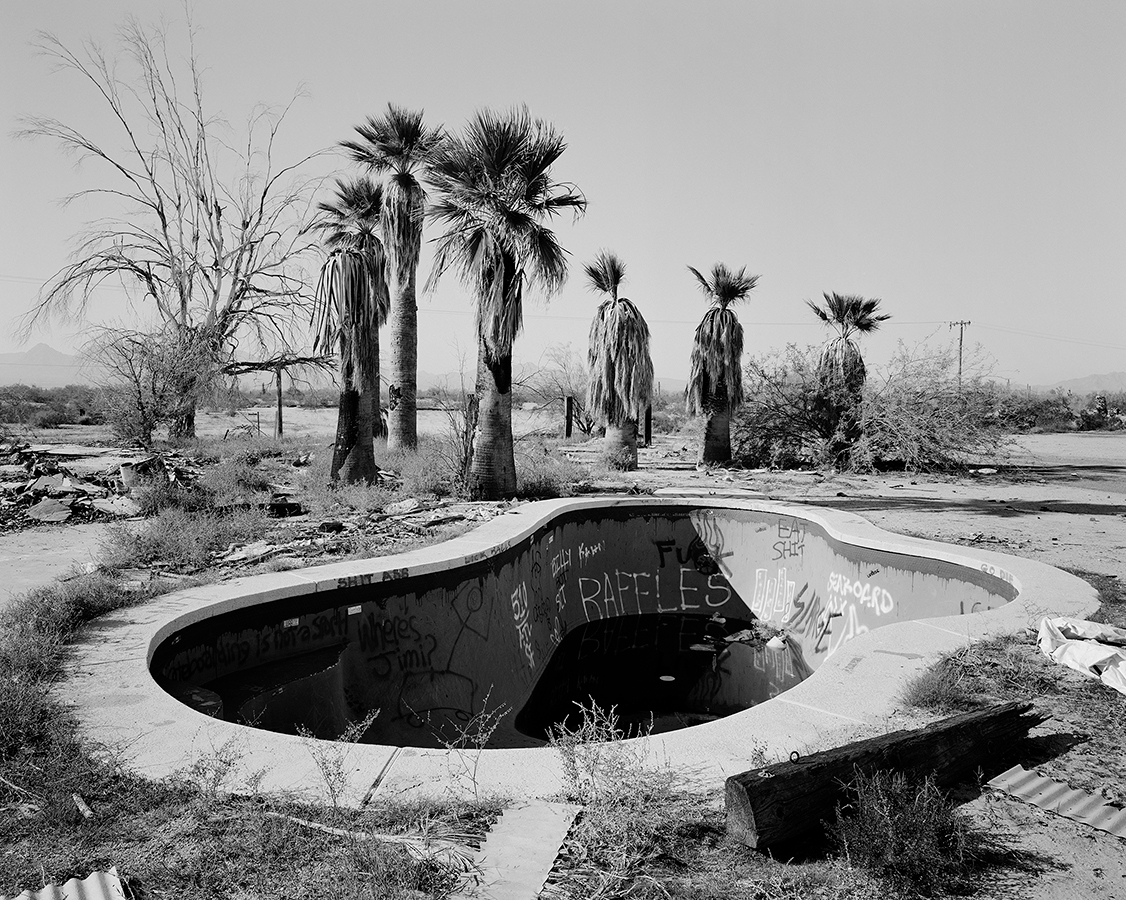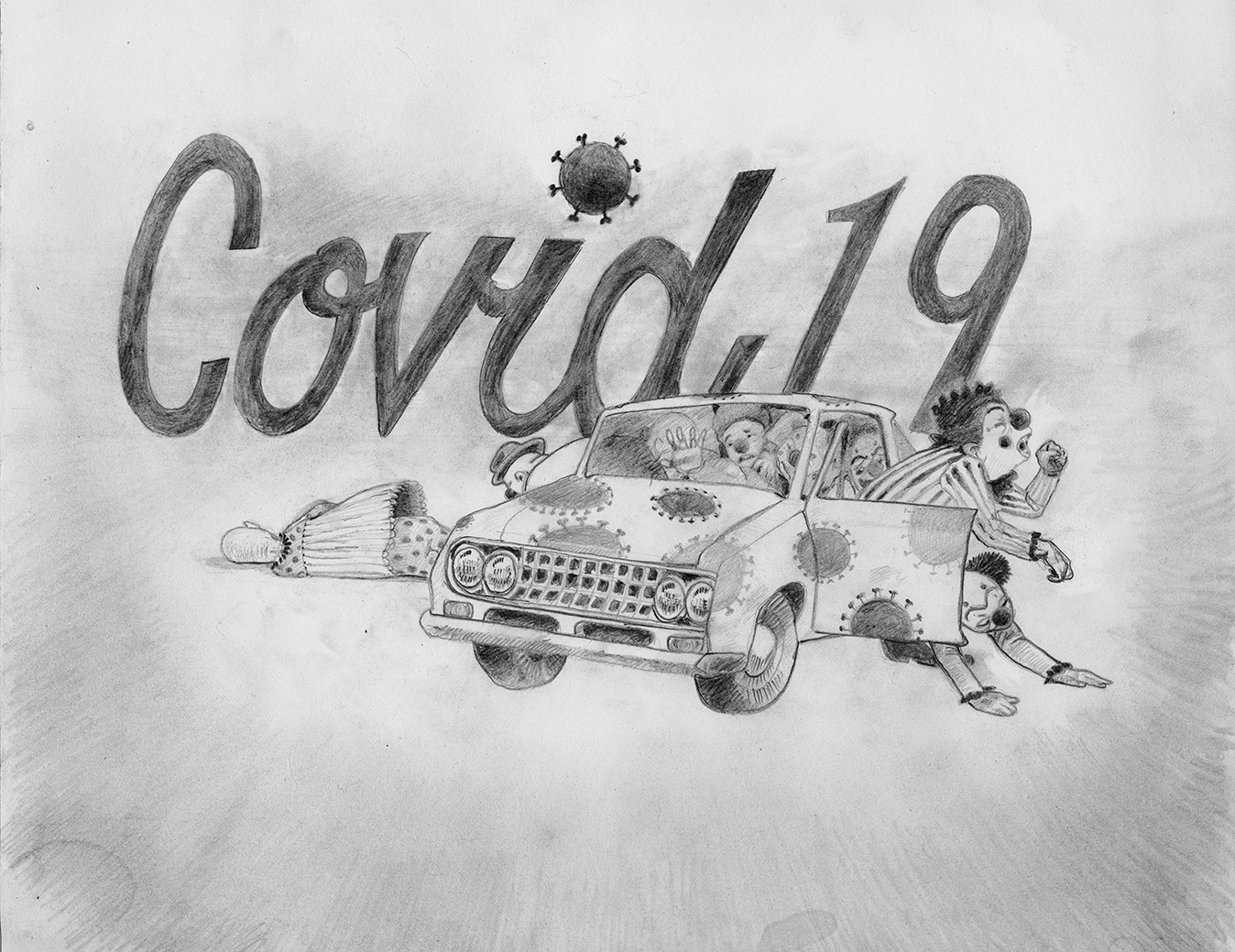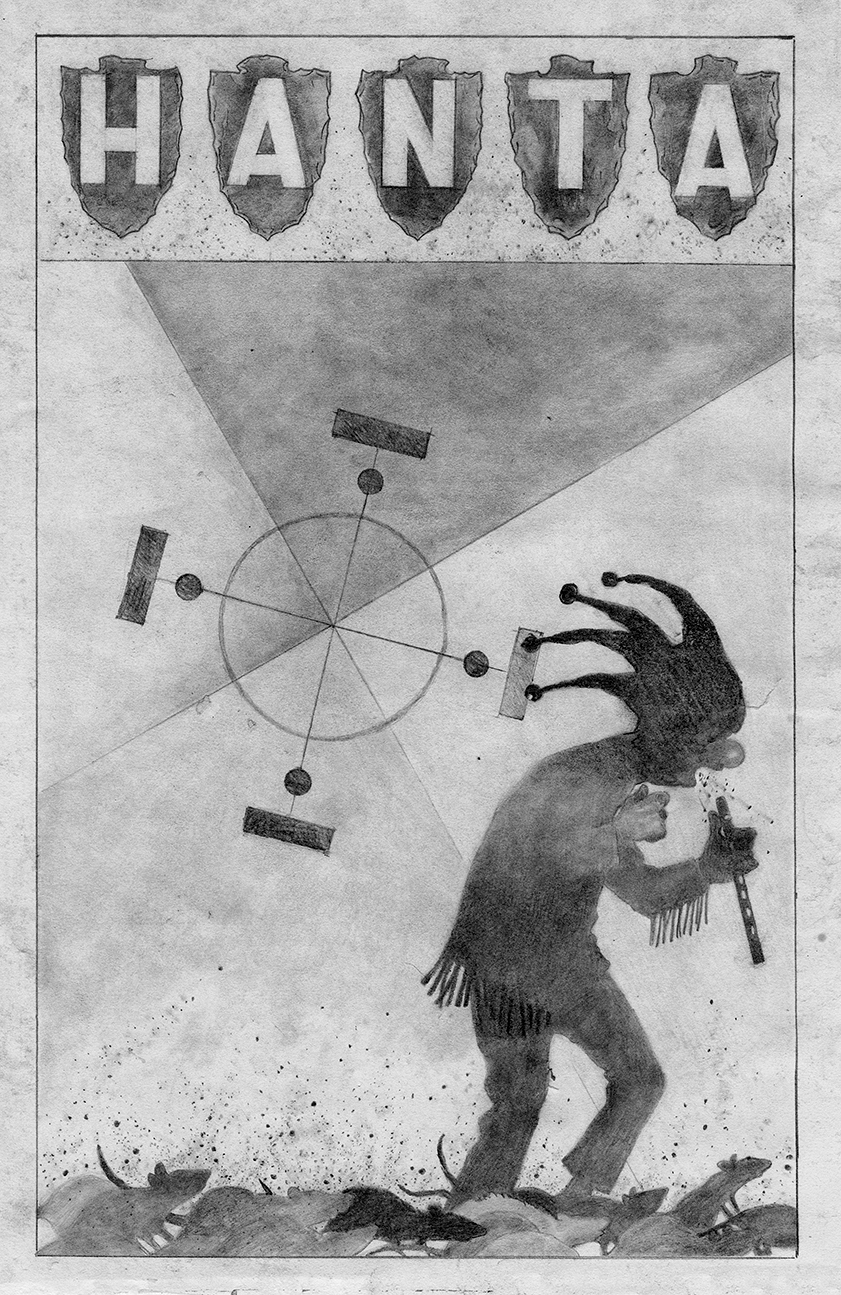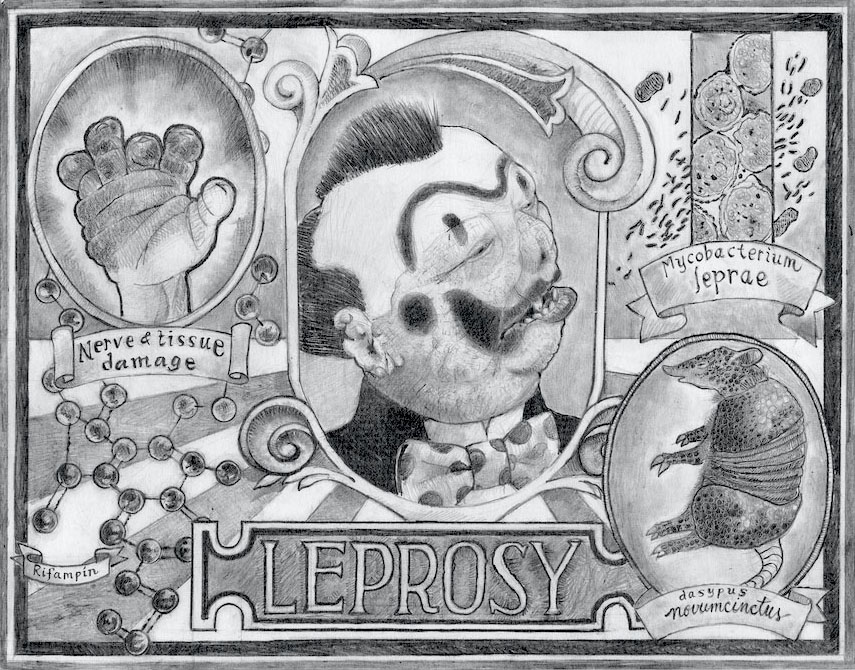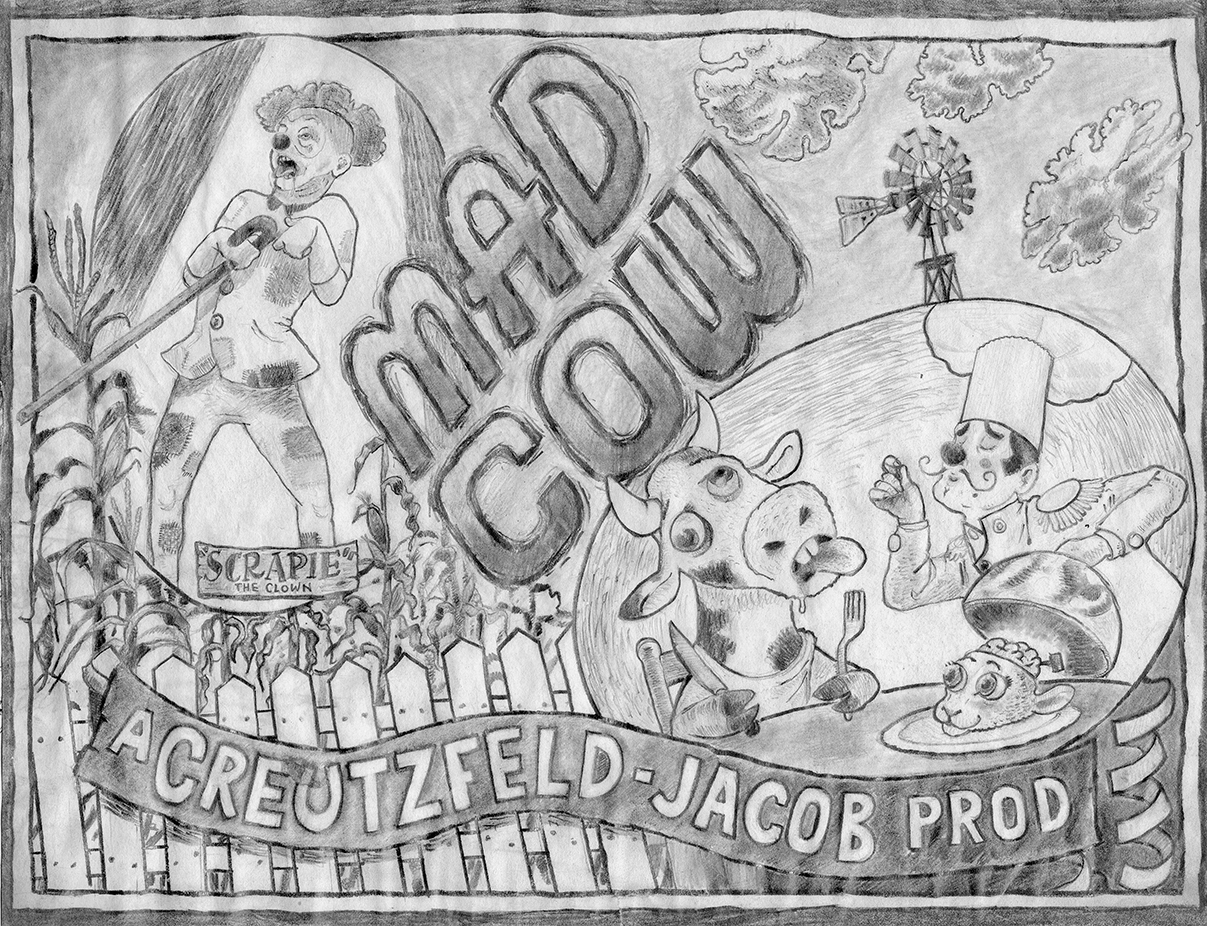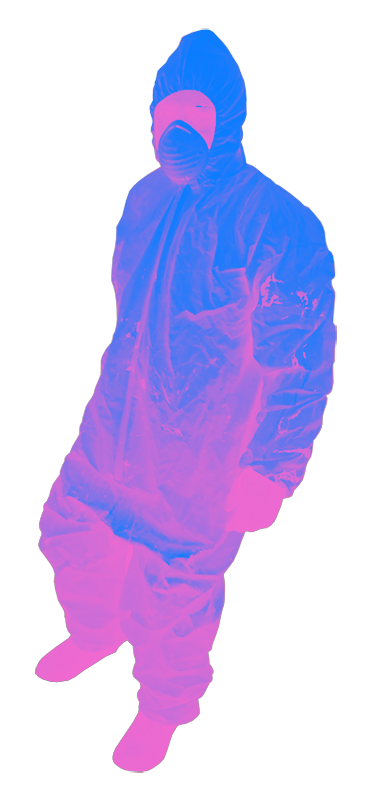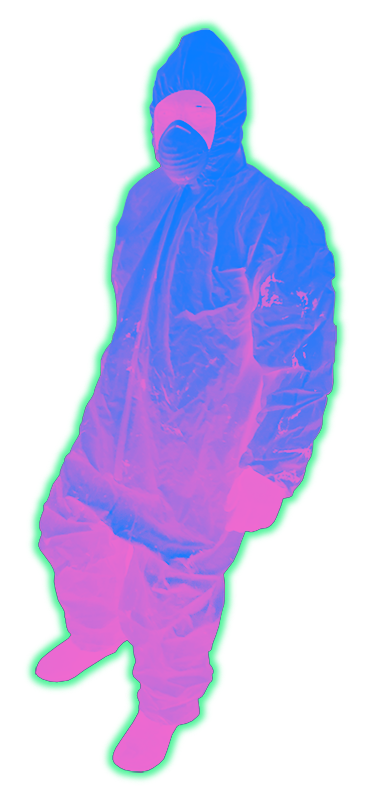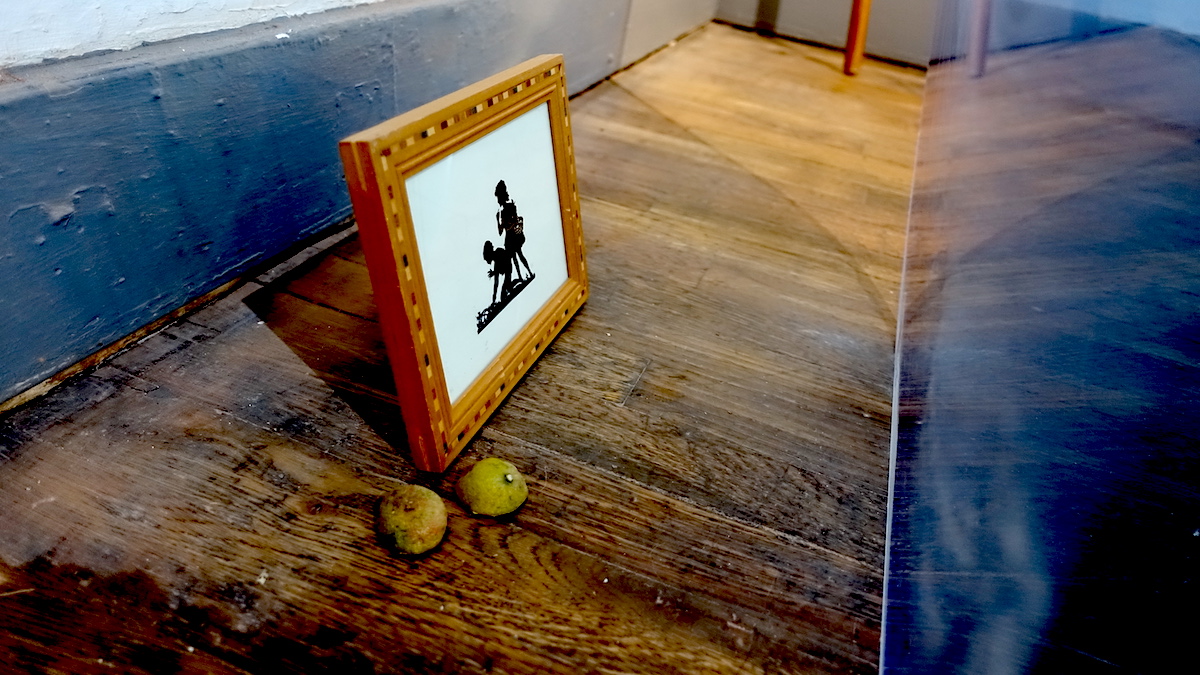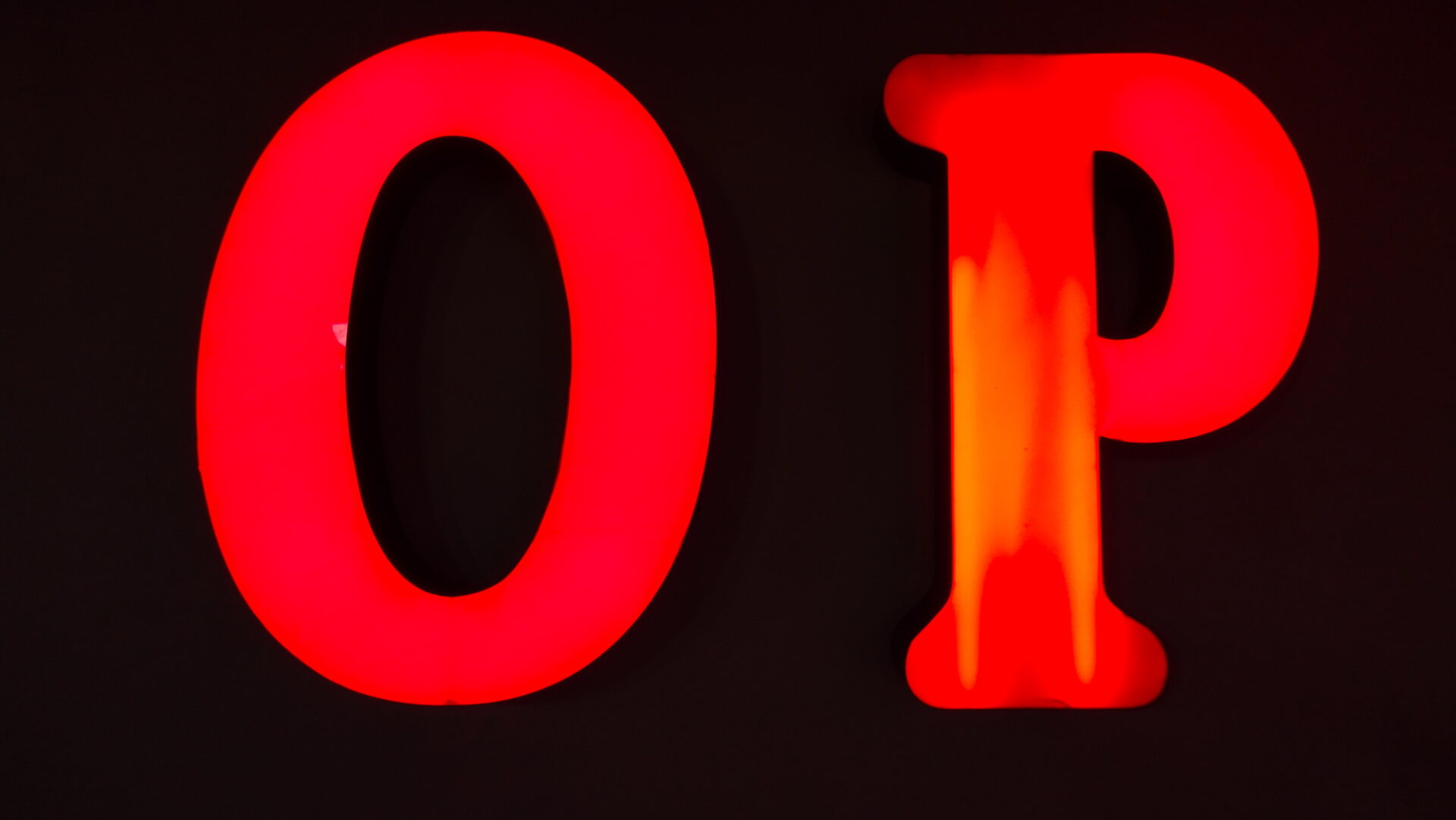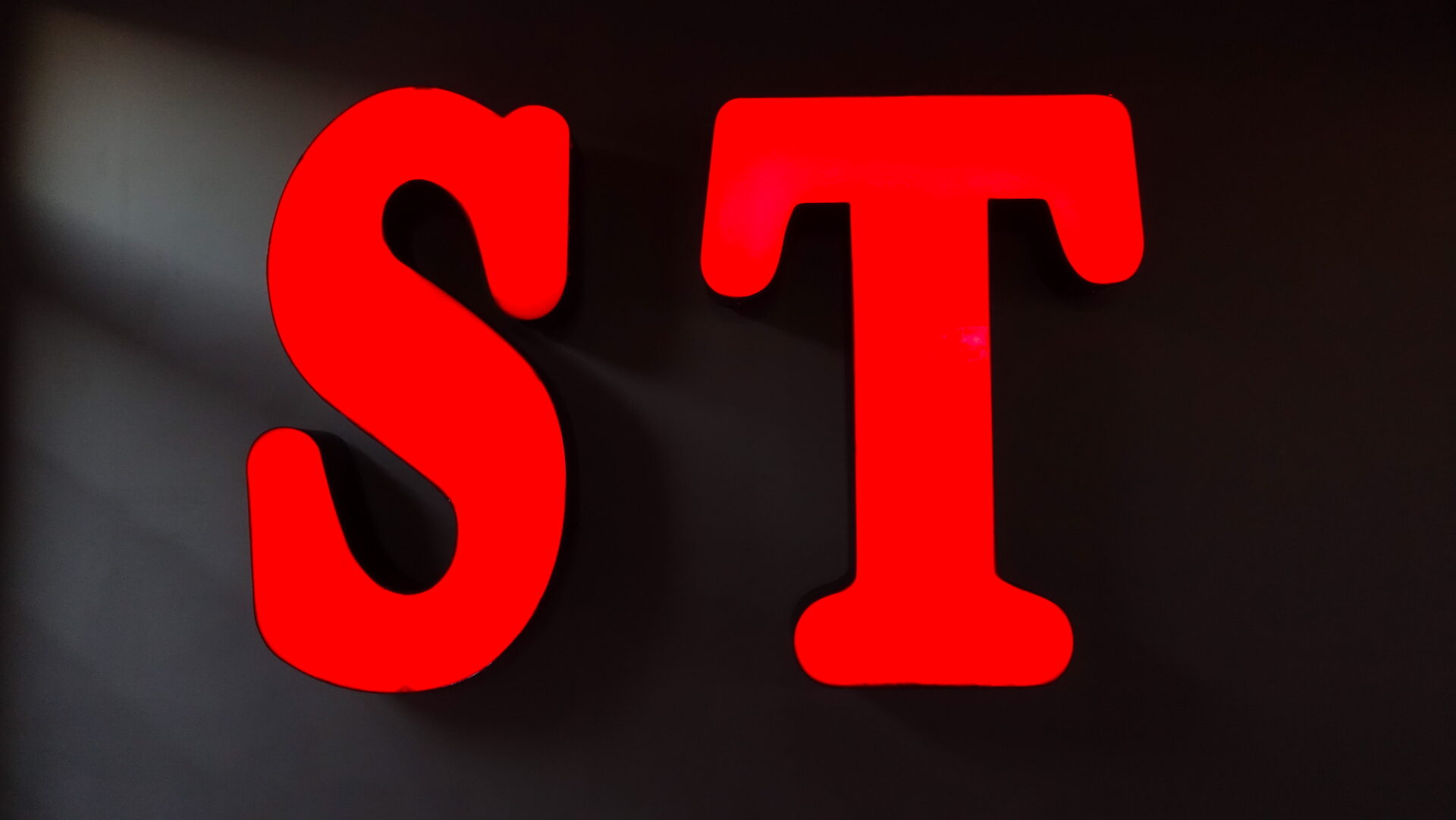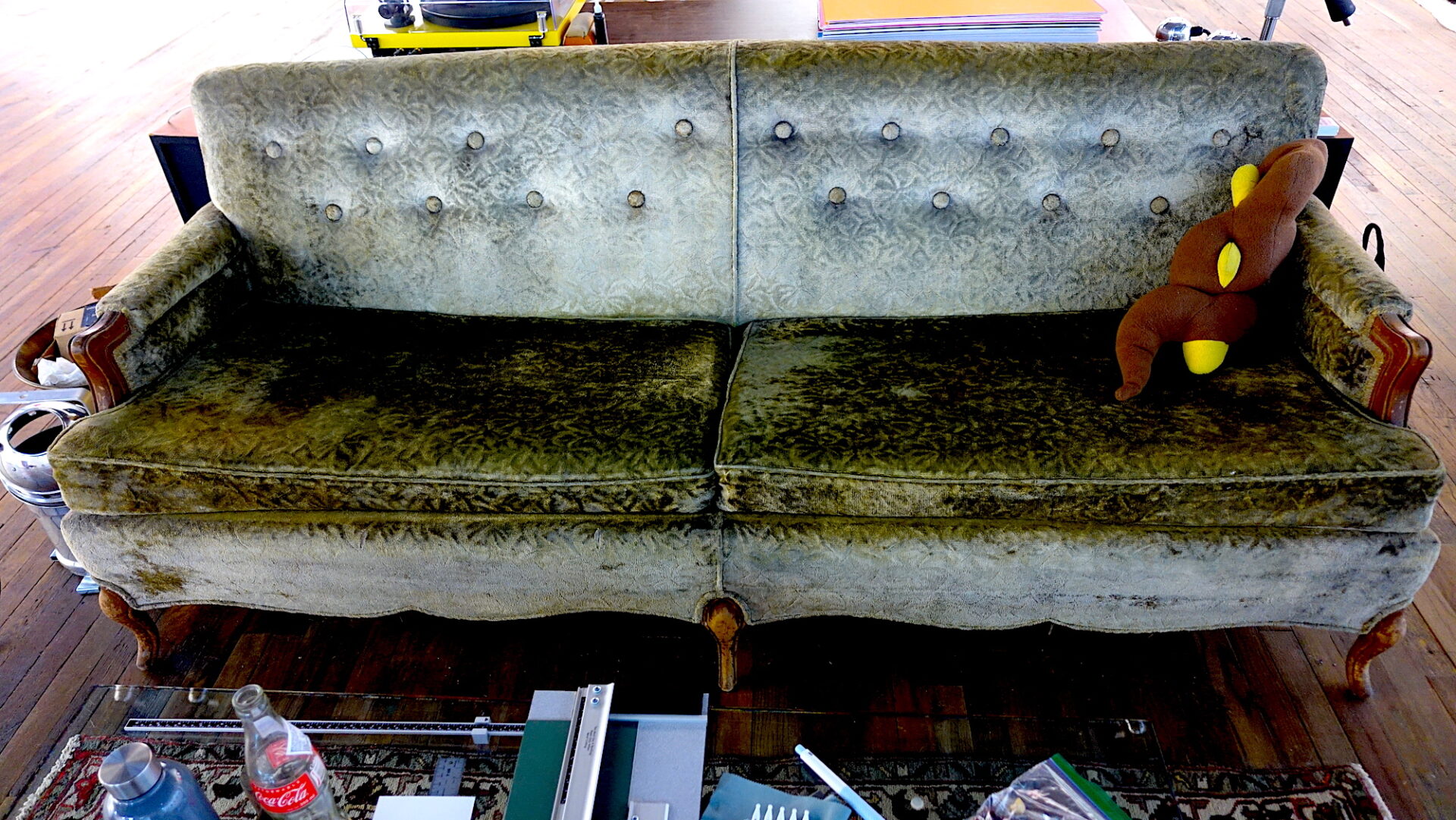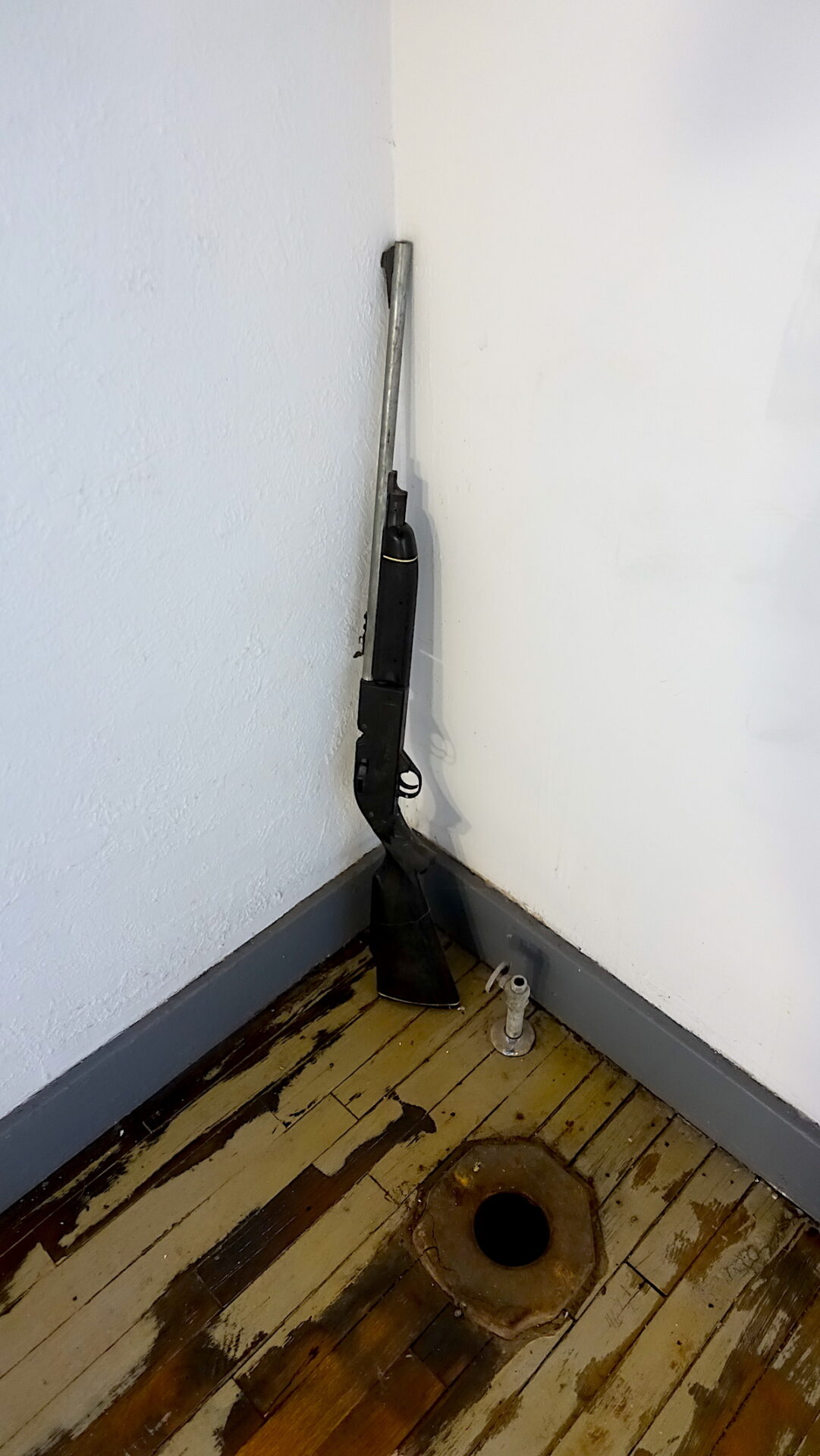VIRUS 2020
VIRUS 2020, curated by Danny Vinik, is a cherry bomb lobbed across the cesspools of political divide and poisonous Internet chatter. It is a stark call to STOP the inaction, STOP the virus, STOP the warrior police, STOP allowing Internet algorithms to polarize us.
A group show, a testimony, burning embers to remind us that life is dangerous beginning with Mario Garcia’s harsh juxtaposition of spectral elements that evil and unrepentant clowns might use to seed the passageways of our weakest bodies with a nightmarish organism, calling to mind a sort of info booklet ware, tattered zines now finally displayed on a gallery wall.
Then we turn to Michael Berman’s trilogy of stillness: poisonous snakes skinned and left glistening on tenterhooks, an empty swimming pool, fetid water, graffitied to hell and back by the desert messengers, and there is life at the border, the drug deal gone bad – who died behind that mask? A novel virus? Jesus for our sins? Chapo? Perhaps it was Hamlet, poisoned by a malevolent head of state. Gosh does that sound familiar?


Kevin Black’s Hamlet is a Shakespeare we’ve never seen before. “Unbated and Envenom’d” exists all at once in the privacy free state, data spectacularly managed for you on the Elsinore Sport’s Network. Who will drink the poisoned pearl? No you don’t have the antibody.
We have no one to blame but ourselves. Just as the lack of Internet accountability is spreading panic around COVID-19, it’s emboldening extremists lurking on the web, like pathetic white supremacist counter insurgents frantically stoking the fires of racism. Turn on the lights and send the cockroaches fleeing back to the drain. We want to expose the dangers of echo chamber thinking, of rewarding sensationalist content, of letting Zuckerberg and Google control what you consume, of giving up your agency in times when you need it most. STOP virus. STOP police. STOP poison. STOP.
Michael Berman
Michael P. Berman’s classically executed black and white photographs participate and extend the tradition of western landscape photography. Berman was awarded a Guggenheim Fellowship in 2008 for his work Grasslands: The Chihuahuan Desert Project. Photographs from this project was published in 2009 in the book Trinity, by The University of Texas, Austin. Trinity is the third book of the border trilogy, The History of the Future, with the writer Charles Bowden. In 2008, the Lannan Foundation organized an exhibition, also titled The History of the Future, of photographs by both Berman and artist Julián Cardona, accompanied by an essay by Bowden. The exhibition traveled to the Santa Fe Art Institute (2008), the North Dakota Museum of Art (2009), Blue Star Contemporary Art Center (2009), Ohio Wesleyan University (2011), and Tulane University (2011). A selection from the show is now on view at the Nation Institute.
Berman was born in New York City in 1956 and later came west to Colorado College, where he studied biology. He subsequently received an MFA in photography from Arizona State University. Fifteen years ago he settled in southwestern New Mexico, where he now lives in the Mimbres Valley near San Lorenzo.
He wanders the border wild lands of U.S. and Mexico and works on the local issues—mining, grazing, wilderness, timber, water, growth and the border—that impact the land. Berman brings an awareness of the complexity of the biological world to the political and social dialogue of the West to his art, which he then uses as a catalyst to renew and heighten our perception of the land.
His photographs are included in the collections of the Metropolitan Museum of Art, the Cleveland Museum of Art, the Amon Carter Museum, Lannan Foundation, and the New Mexico Museum of Art. He has received Painting Fellowships from the Arizona Commission on the Arts and the Wurlitzer Foundation and his installations and paintings have been reviewed in Art in America, and exhibited throughout the United States.
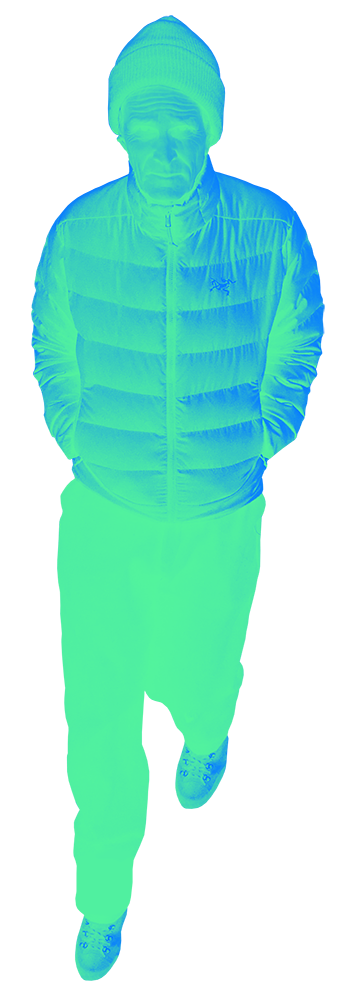
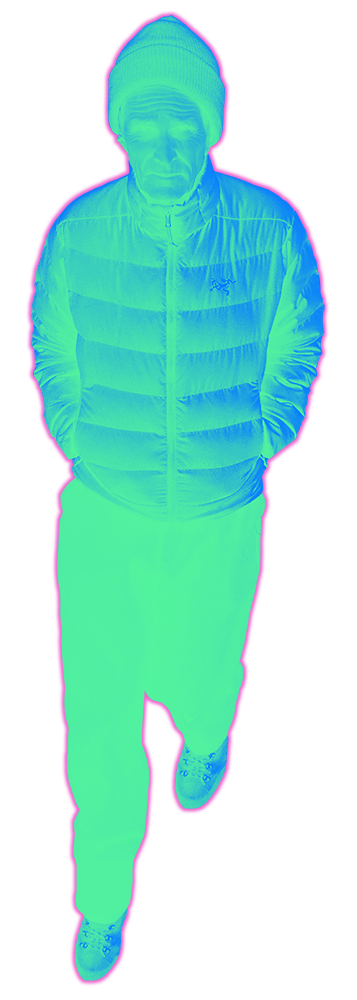
Mario Garcia
“I wish I could spend more time drawing stuff, but I have a job that is kind of soul-sucking (in a good way), that is, a first grade teacher. And besides, drawing and I have an adversarial relationship, where I end up hating most of what I do. But I continue to draw, when I can, which is mostly during work meetings. During one, I drew a dead clown, as a response to the prevailing mood of the meeting.
I got to thinking about what might have killed the clown. I added pustules and swelling. These doodles led to the series, “Clowns, Diseases, and You”. I hoped to use the clowns to educate the public about the dangers of communicable diseases, like a public service.”
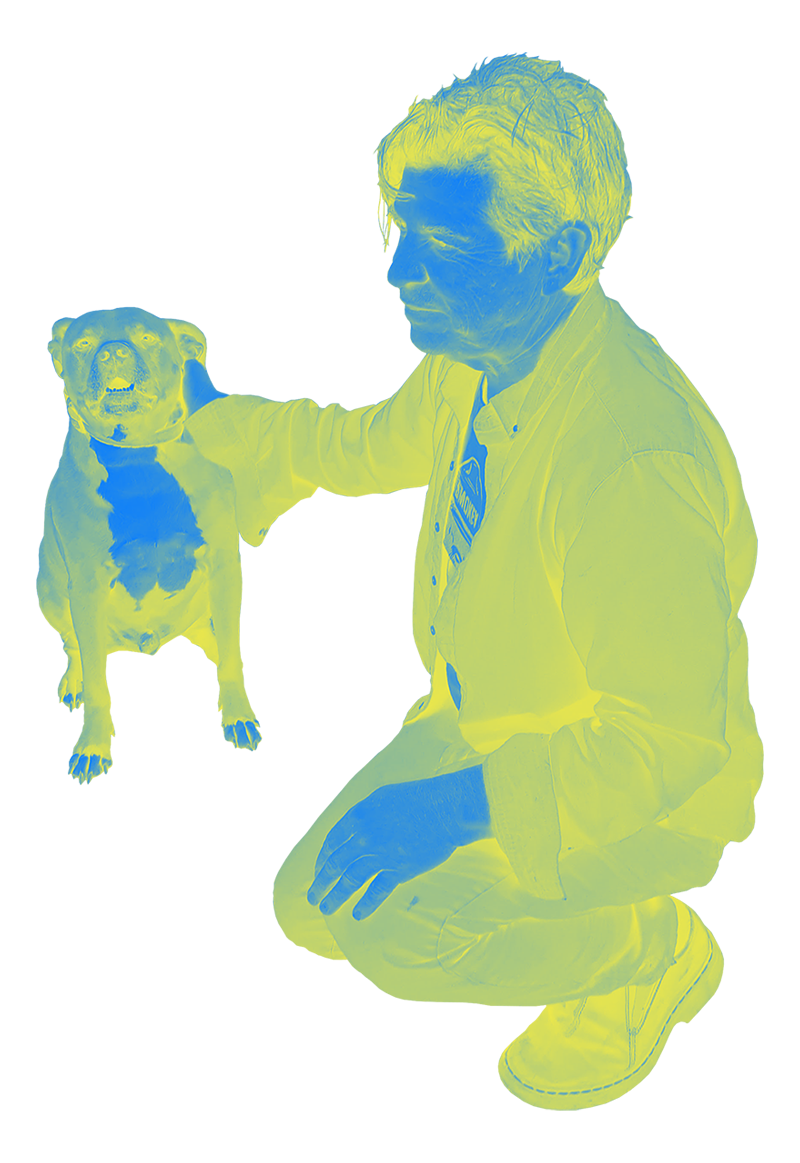

Kevin Black
Kevin Black is a professional actor, director, producer and teacher based in Tucson, Arizona. A graduate of Carnegie Mellon University’s Drama program, he has acted at The New York Shakespeare Festival, Primary Stages, Theatre for a New Audience, The Pearl Theatre Company, Laguna Playhouse, and Arizona Theatre Company, and appeared in films selected for the San Francisco International, Seattle International, Venice and Sundance Film Festivals. He was an Associate Producer on the HBO Documentary ‘Brillo Box 3 Cents Off’. He is a Professor of Practice in the University of Arizona’s School of Theatre, Film and Television.

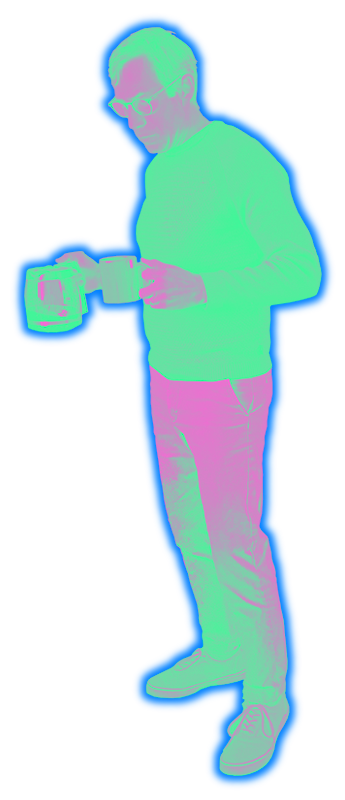
Curator Statement
